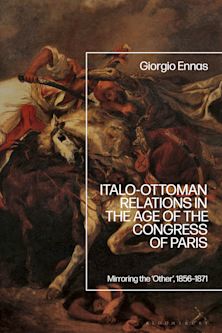- Home
- ACADEMIC
- History
- European History
- The Limits of Alliance
The Limits of Alliance
The United States, NATO, and the EU in North and Central Europe
The Limits of Alliance
The United States, NATO, and the EU in North and Central Europe
This product is usually dispatched within 1 week
- Delivery and returns info
-
Free US delivery on orders $35 or over
You must sign in to add this item to your wishlist. Please sign in or create an account
Description
Are the relationships that the United States forged with North and Central Europe during the Cold War still viable today? As the North Atlantic Treaty Organization (NATO) declines and the European Security and Defense Policy (ESDP) emerges, can the United States and Europe bridge the transatlantic fissures that opened when the United States prepared to go to war with Iraq? In a post-9/11 world, North and Central Europe have had to adapt their national security policies and rethink their relationship with the United States. In an in-depth look at the security policies of the states in North and Central Europe, Andrew Michta highlights how historical legacies, regional geostrategic constraints, and individual capabilities have shaped their response to the new environment. Michta raises the broad question of whether traditional alliances and NATO are still viable ways to deal with new security concerns. The two key questions that arise from this discussion are to what extent NATO still matters to the United States, beyond its political utility, and whether the European Union as a whole can become a partner for the United States in a new security environment. The Limits of Alliance argues that, although NATO will continue to exist in the coming decade, the hollowing-out of the alliance will be accompanied by a shift in transatlantic security relations toward bilateralism determined by regional security considerations.
Table of Contents
Chapter 2 The Geostrategic Reconfiguration of North and Central Europe
Chapter 3 The Linchpin: Germany and Poland
Chapter 4 The Northern Boundary: Scandinavia
Chapter 5 The Northeastern Littoral: Russia and the Baltic States
Chapter 6 American Policy toward North and Central Europe Before and after 9/11
Chapter 7 Conclusion
Product details
| Published | Apr 13 2006 |
|---|---|
| Format | Hardback |
| Edition | 1st |
| Extent | 192 |
| ISBN | 9780742538641 |
| Imprint | Rowman & Littlefield Publishers |
| Dimensions | 9 x 6 inches |
| Series | The New International Relations of Europe |
| Publisher | Bloomsbury Publishing |
About the contributors
Reviews
-
In The Limits of Alliance, Andrew Michta once again demonstrates why he is one of the leading authorities on European security. This rich, balanced, and detailed exploration of developments in North and Central Europe is a major contribution to our understanding of the range of security issues facing the European Union and NATO today.
James M. Goldgeier, George Washington University
-
Andrew Michta has written a very important, excellent book on the geostrategic reconfiguration of northern and central Europe in the post-9/11 world. The Limits of Alliance is important because it provides insights into the direction of future NATO-EU and transatlantic relations, and excellent in its scholarship and understanding of the dynamics of European politics. This book should be read by policy makers and students concerned with European politics.
Jeff Simon, National Defense University
-
For anyone who wants to know why NATO has fallen on hard times, read Andrew Michta's terrific new book. It makes clear that the future is bleak for that venerable institution, not just because trans-Atlantic relations have gone south, but also because of what is happening inside Europe. This is a sad tale well told.
John J. Mearsheimer, University of Chicago
-
Recommended.
Choice Reviews
-
Andrew Michta provides a well-written, detailed, scholarly-yet-insider account of the new security arrangements in North and Central Europe. These areas have been largely ignored in recent years, since the dramatic enlargement of the EU and NATO to the east, but Michta probes deeply into the geostrategic reconfiguration of Germany, Scandinavia, the Baltics, Central Europe, and Russia to ask what the new allies contribute to the Atlantic Alliance, what new alliance arrangements are being made, and what the implications of these changes are for U.S. policy. Insightful, highly readable, and well informed. Michta is one of the leading scholars in the field.
Howard J. Wiarda, University of Georgia (late)


































